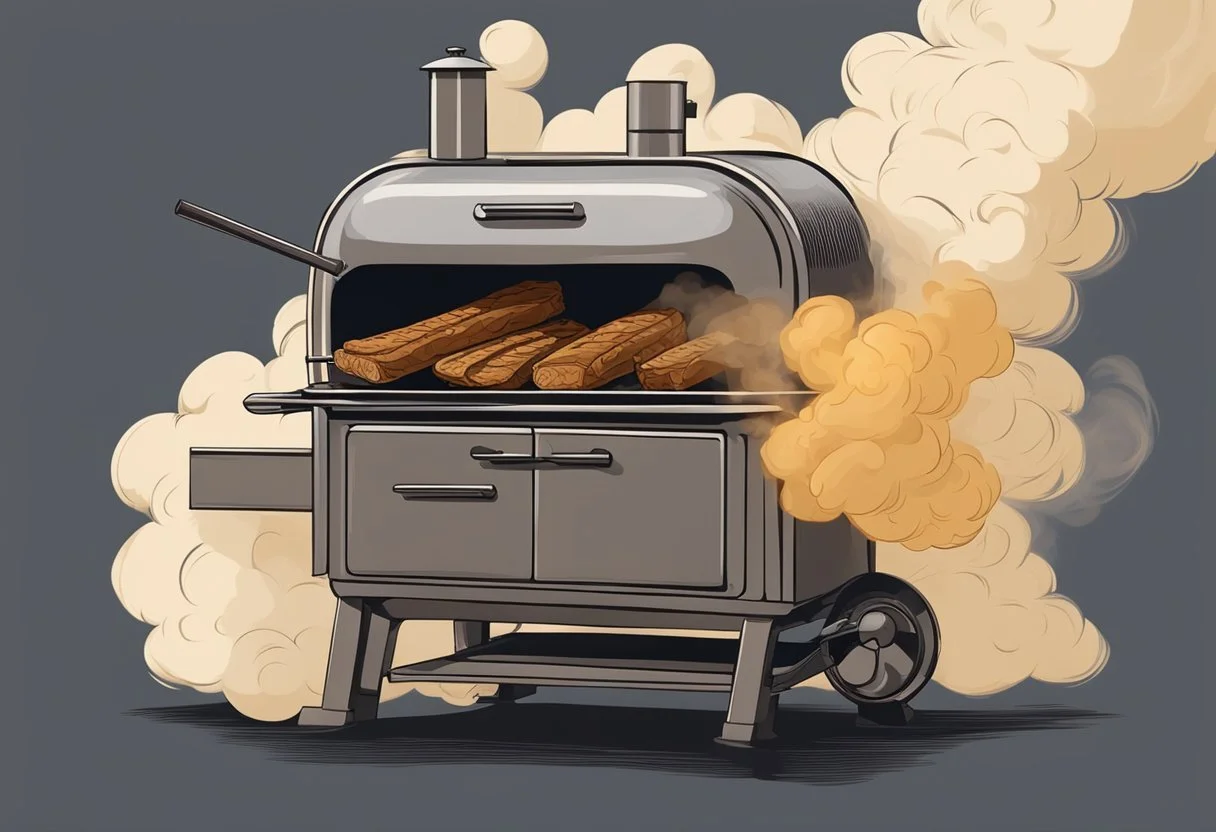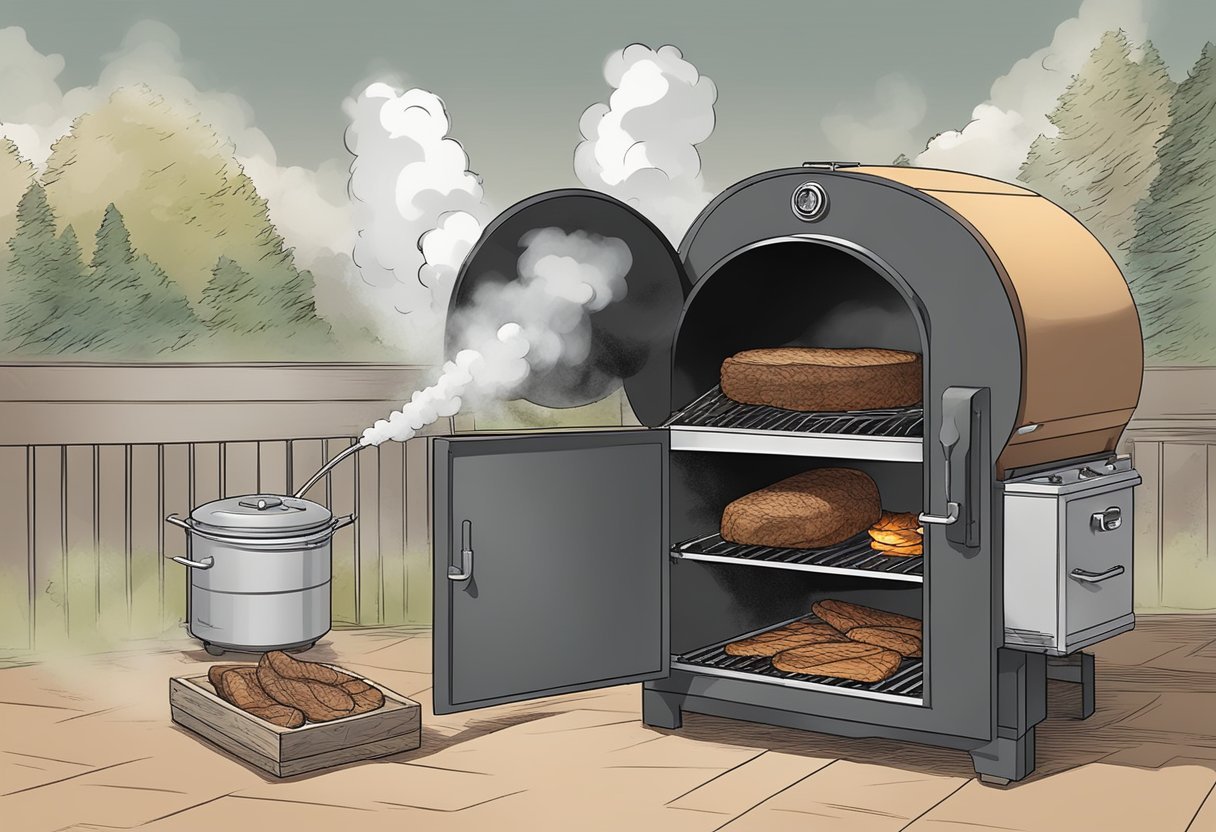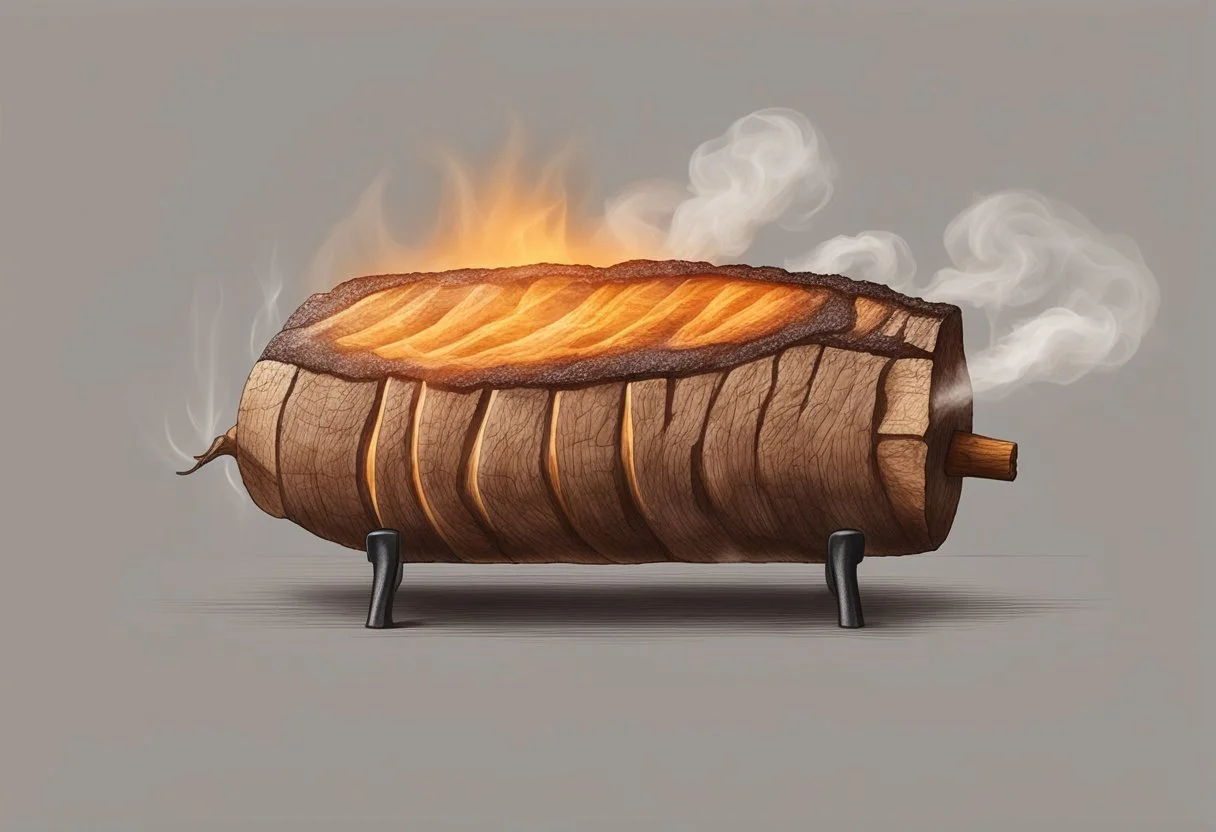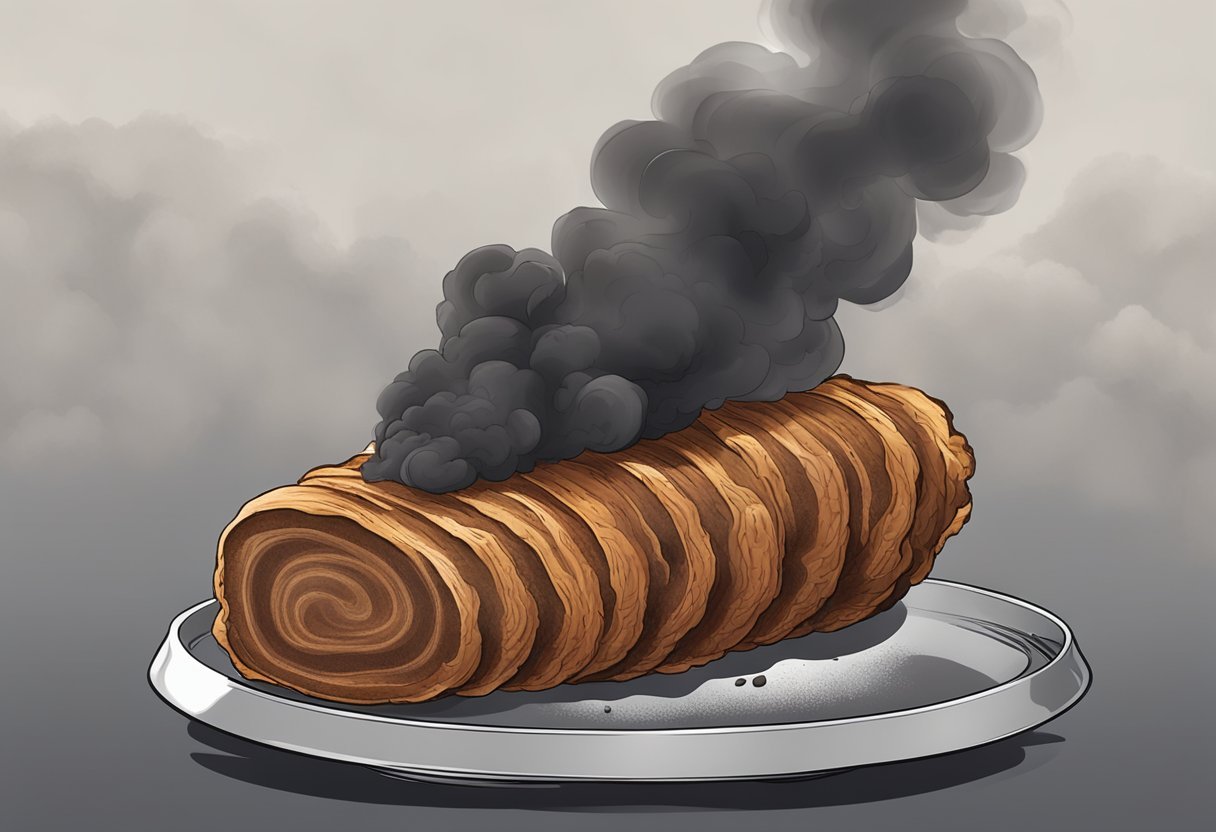Smoke Ring Mastery
Smoking Meat, Brisket & Achieving the Perfect Smoke Ring
The art of smoking meat has long been a staple in the culinary world, revered by barbecue enthusiasts for the tantalizing flavors and tender textures it can create when done properly. At the heart of this process lies the smoke ring, a visually appealing aspect that's often considered a badge of honor among pitmasters. This outer layer of smoked meat, with a pinkish hue resembling a halo around the core, can make or break a brisket in the eyes of many aficionados.
The formation of smoke rings in meat is a topic that often baffles many home cooks. It is essential to understand the interaction between the heat, vapors released during smoking, and the internal temperature of the piece of meat. Achieving the perfect balance of these elements is the key to creating rich, flavorful, and tender smoked meat. However, it's essential to keep in mind that smoking meat comes with its share of health risks such as lung cancer and lung diseases. Therefore, it's crucial to maintain a safe smoking temperature to eliminate any potential health hazards.
Whether you're a seasoned chef or a novice backyard cook, consistency in creating the perfect smoke ring requires practice, patience, and a strong understanding of the underlying processes at work. With dedication and time, anyone can elevate their barbecuing experience to craft mouth-watering, tender briskets boasting an impressive smoke ring, while ensuring their safety and well-being.
Understanding Smoke Rings
Science of Smoke Rings
A smoke ring is a prized feature in smoked meats (What wine goes well with smoked meats?), especially in brisket, as it showcases the cooking process's skill and technique. The formation of smoke rings is attributed to a series of chemical reactions involving myoglobin, nitric oxide (NO), and carbon monoxide (CO). Myoglobin is a protein found in muscle tissue that gives raw meat its red color. As meat is smoked, nitric oxide (NO) and carbon monoxide (CO) are produced and interact with the myoglobin, resulting in a stable pink color that does not dissipate during cooking.
Chemical reactions involved in smoke ring formation:
NO and CO are released during the smoking process.
NO and CO interact with myoglobin in the meat.
The combination of these interactions produces a stable pink color.
Factors Affecting Smoke Ring Formation
Several factors can impact the formation of a smoke ring. A few of these include:
Temperature: A low and slow cooking process is crucial to the formation of smoke rings. Cooking at lower temperatures, typically between 225°F and 250°F, allows for maximum NO and CO absorption into the meat.
Humidity: Moisture on the meat's surface helps dissolve NO and CO, resulting in a more prominent smoke ring. Adding a water pan or spraying a water-vinegar solution during cooking can create humidity inside the smoker.
Type and quantity of wood: The type of wood used in smoking can affect the smoke ring's color and intensity. Hardwoods and fruitwoods typically yield more NO and CO than softwoods. Combining different varieties of wood can produce a richer and deeper-hued smoke ring.
Meat choice: Cuts with higher myoglobin content, such as beef and lamb, will display more prominent and darker smoke rings compared to pork or poultry.
Meat preparation: Meat that is less aged and less exposed to air will retain more myoglobin, thus creating a more visible smoke ring. Rubs or marinades with a high concentration of nitrites or nitrates can also contribute to a smoke ring's formation.
To achieve an ideal smoke ring, it is essential to carefully assess and control these factors during the smoking process. Remember that, though visually appealing, the smoke ring's presence does not always guarantee the meat's taste or tenderness. The final determination of quality smoked meats relies on factors beyond the smoke ring.
The Meat Smoking Process
Preparing the Meat
When smoking brisket or other meats, proper preparation is crucial for achieving a flavorful and tender result. First, select a high-quality cut of meat with a good amount of marbling – this fat will render and keep the meat moist during the long smoking process. Trim any excess fat, leaving around 1/4 inch to help lock in moisture and flavor.
Next, apply a dry rub or marinade to enhance the flavor of the meat. For simplicity, a combination of salt, pepper, and garlic powder (how long does garlic powder last?) works well as a rub. However, personal preferences or regional specialties may call for more elaborate mixes. Allow the meat to rest and absorb the rub for at least a few hours, or ideally overnight, in the refrigerator.
Smoking Techniques
Various smoking techniques have evolved, but the principle remains the same: using indirect heat, low temperatures, and wood smoke to cook meat slowly and steadily. The "low and slow" method helps break down the tough connective tissues in the meat, resulting in a tender, juicy final product.
First, decide on the type of wood to be used, as different woods produce distinct flavors. Popular choices include hickory, mesquite, and applewood. It's important to presoak wood chips or chunks in water, so they smolder rather than burn directly, generating the desired smoke rather than heat.
Next, set up a dedicated smoker or a grill for indirect cooking. With a dedicated smoker, simply follow the manufacturer's instructions. For a grill, separate the coal or fire on one side and place a drip pan filled with water on the other side, creating a cooler zone for the meat. Lay the soaked wood chips or chunks over the coals or place them in a smoker box for a gas grill.
Temperature Control
Accurate temperature control is vital for a successful smoking process, as consistency ensures even cooking. Aim for a temperature range between 225°F and 250°F, adjusting the vents or dampers as needed to increase or decrease the heat. Always use a reliable thermometer and monitor the temperature throughout the process.
Place the meat on the grill grate, over the drip pan, and cover with a lid or aluminum foil tent, allowing the smoke to circulate the meat. Maintain a consistent temperature and replenish wood chips or charcoal as needed. Depending on the size and cut of the meat, smoking can take anywhere from 4 to 14 hours.
Remember, patience is key during the smoking process, as opening the smoker or grill too often will release heat and smoke, increasing cooking time and potentially affecting the outcome. Trust the process, and enjoy the delicious, tender, smoky final product.
Choosing the Right Equipment
When it comes to smoking meat and achieving that perfect smoke ring, choosing the right equipment is crucial. In this section, we will discuss the different types of smokers and the wood and fuel options available to you.
Types of Smokers
There are several types of smokers available in the market, and each type has its pros and cons. Here are the most common types of smokers:
Offset Smokers: These consist of a firebox connected to a smoking chamber. Wood and charcoal provide the heat, and the smoke travels through the smoking chamber, cooking the meat.
Vertical Smokers: Also known as bullet smokers, these are usually fueled by charcoal briquettes and use a water pan to provide moisture during the smoking process.
Electric Smokers: As the name suggests, these use electricity as a heat source. They are easy to use and maintain, making them a popular choice for beginners.
Gas Smokers: These smokers use propane or natural gas as a fuel source, providing a consistent temperature for even cooking.
When selecting a smoker, consider factors such as the size, ease of use, and the type of fuel it uses.
Wood and Fuel Options
Different wood and fuel options can impact the flavor and texture of the smoked meat. Here's a list of the most common options, along with some details:
Hardwood: Woods such as oak, hickory, and maple provide a strong, smoky flavor, ideal for brisket and other red meats.
Fruitwood: Apple, cherry, and peach wood are examples of fruitwood, which impart a mild, sweet flavor to the meat, making them excellent choices for poultry and pork.
Charcoal Briquettes: Charcoal briquettes are typically made from compressed charcoal dust. They provide a consistent heat source and are perfect for low and slow cooking sessions.
Lump Charcoal: Made from hardwood, lump charcoal tends to burn hotter and faster than briquettes. It is preferred by many pitmasters for its purity and reduced ash production.
Electric Smokers: These smokers use an electric heating element to produce heat. Although it allows for precise temperature control, it does not provide the same level of smoke flavor as wood or charcoal.
It is important to choose the right combination of smoking and fuel for your specific needs and preferences. Experimenting with different wood species and fuels can help you discover the perfect smoking setup for your taste.
Selecting and Preparing Wood
Wood Characteristics
When smoking meat, it's crucial to choose the right type of wood for optimal results. Generally, hardwood is preferred over softwood, as it provides a more consistent heat and imparts a better flavor. Common hardwoods used for smoking include hickory, oak, maple, cherry, and apple. Each wood type lends a distinct taste to the smoked meat, so experiment to find your personal favorite.
It's also important to avoid using green wood or wood that has been treated with chemicals. Green wood contains high levels of moisture, which can lead to bitter-tasting smoke. Similarly, chemically treated wood can release harmful fumes that you don't want near your food.
Seasoning and Soaking Wood
Before using any wood for smoking, it should be properly seasoned. Seasoned wood has been allowed to dry for several months, reducing the moisture content significantly. This ensures a cleaner, more efficient burn in your smoker. To properly season wood:
Stack the wood in a well-ventilated area
Allow air to circulate the wood
Protect it from direct rain and moisture
Give it ample time to dry (usually 6-12 months, depending on the wood)
After seasoning, some people choose to soak their wood chips or chunks before smoking. This process can help extend the smoking time by slowing down the wood's combustion rate. To soak your wood:
Fill a container with water
Immerse the wood chips or chunks for 30 minutes to a few hours
Drain and pat dry before use
Keep in mind that soaking is not always necessary and may depend on your specific smoker and personal preference. Experiment with both soaked and unsoaked wood to find what yields the best results for you.
Meat Selection and Preparation
Beef Brisket and Pork
When it comes to smoking meat, the most popular choices are beef brisket, (What wine goes well with beef brisket?) and pork. While both types of meat are delicious when smoked, the techniques and approaches to smoking may vary. A fundamental way to improve the taste and quality of smoked meat is to select the right cut for your recipes. Choosing high-quality cuts of meat will yield the best results. For beef brisket, opt for cuts with a thick, even fat cap and a deep, rich red color for optimal flavor. Pork, which is considered white meat, (What wine goes well with white meat?) should have pink or light red hues with a thin layer of fat. In the world of smoking, red meat, such as beef and wild game, has a stronger flavor profile and benefits from low-and-slow cooking, meaning it needs a longer time to cook at lower temperatures. On the other hand, white meat like pork cooks faster and has a milder flavor.
Cuts and Trimming
Properly trimming your meat is an essential step in the smoking process. For beef brisket, you'll want to begin by trimming the fat cap to ensure even cooking. It’s essential to leave about a 1/4 inch of the fat cap to maintain moisture and flavor while smoking.
For pork cuts like pork butt or pork shoulder, you should also trim any excess fat and skin, as this can impede the smoking process. The goal is to achieve an even surface on your meat to ensure consistent flavor and texture throughout the cooking process.
Once your meats are trimmed and prepared, it's time to season them. Here are some basic seasoning guidelines:
Beef
Salt, pepper, garlic powder, onion powder (how long does onion powder last?)
Pork
Salt, pepper, paprika, brown sugar, mustard powder (how long does mustard powder last?)
Remember, seasonings can vary depending on individual taste preferences, and the options are virtually endless. However, it's crucial to use enough seasoning to create a robust flavor without overpowering the natural taste of the meat.
In conclusion, selecting the right cuts of meat, proper trimming, and seasoning play a vital role in obtaining exceptional results when smoking brisket and pork. Follow these guidelines, and you'll be on your way to smoked meat perfection.
Creating The Perfect Bark
Role of Seasoning
Achieving the perfect bark on smoked meats begins with selecting the appropriate seasoning. It is crucial to use a balanced blend of flavors that complement the meat without overpowering it. Bold flavors such as paprika, black pepper, and garlic are essential, but consider adding sweeter notes such as brown sugar or maple syrup to provide a more rounded taste.
A key step in applying the seasoning is to form a proper crust on the brisket. To achieve this, generously coat the entire surface of the meat with the seasoning blend, ensuring it adheres evenly. Pressing the mixture onto the meat is beneficial to create a firm bond throughout the cook. Here's a simple rub recipe to consider:
Paprika: 1/4 cup
Black Pepper: 1/4 cup
Brown Sugar: 1/4 cup
Garlic Powder: 2 tbsp
Moisture Management
Managing moisture is an essential aspect of creating that desirable, crispy bark on your meat. There are several methods to control moisture in the smoking process, including fat management, mopping, spraying, humidity control, and spritzing.
Fat management: A layer of fat on the brisket surface assists in preserving moisture within the meat and contributes flavor to the bark. Trim excess fat and consider scoring the remaining layer in a crosshatch pattern. This allows seasonings to penetrate deeper into the meat, yielding a richer flavor.
Mopping: Mopping involves using a barbecue mop or brush to apply a thin layer of liquid (typically a mixture of vinegar, water, and seasonings) to the meat during cooking. This not only adds flavor but also supplies additional moisture.
Spraying: Similar to mopping, spraying liquids such as apple juice, beer, or broth during the smoking process helps maintain the desired humidity level inside the smoker, retaining moisture and promoting adequate bark formation.
Humidity control: Maintain consistent humidity levels within the smoker by adding a water pan. The evaporating water works in tandem with the fat and seasoning, producing an inviting smoky bark.
Spritzing: Every hour or two, quickly mist the surface of the meat with apple cider vinegar (how long does apple cider vinegar last?) or a similar liquid. Just be sure to open the smoker's door as briefly as possible to minimize heat and humidity loss.
By carefully managing seasonings and moisture, the ideal balance of flavor, texture, and color can be achieved in the carefully crafted bark. Follow these guidelines to ensure that your smoked meats come out with a perfect, mouthwatering bark every time.
Flavors and Seasoning Techniques
When smoking meats, the right balance of flavors and seasoning techniques is crucial for creating a mouth-watering meal. This section will examine how to properly season your meats, covering rubs and marinades, as well as mopping and spritzing.
Rubs and Marinades
Dry Rubs are a popular way to impart flavor directly to the meat. Dry rubs typically consist of a blend of dry spices, herbs, and seasonings that adhere to the meat's surface. They create a flavorful crust on the exterior without affecting the internal moisture content. Common ingredients in dry rubs include:
Salt
Black pepper
Paprika
Sugar
Chili powder
Onion powder
Garlic powder
Adjusting the ratios and adding various other spices can customize the flavor profile to your liking.
Marinades, on the other hand, are liquid mixtures used to infuse flavor into the meat. Meat is soaked in the marinade for a period of time, often several hours or overnight, to allow the flavors to penetrate the meat. Marinades typically include an acid (such as vinegar or citrus juice), oil, and seasonings. The acid in marinades can also help to tenderize tougher cuts of meat. Common marinade ingredients are:
Vinegar (apple cider or white)
Olive oil
Soy sauce (how long does soy sauce last?)
Worcestershire sauce (how long does worcestershire sauce last?)
Minced garlic
Onion
Fresh herbs (rosemary, thyme, etc.)
It's important to consider the desired smoke flavor when smoking meats. Using rubs and marinades that complement the smoke is essential. For example, using a sweet and spicy rub with a mild fruitwood smoke can create a great balance of flavors.
Mopping and Spritzing
When smoking meats, especially cuts like brisket that require long cooking times, maintaining internal moisture is critical. Two techniques that can help in this process are mopping and spritzing.
Mopping involves using a mop-like brush to apply a liquid mixture to the surface of the meat throughout the cooking process. Mops are usually composed of a liquid base like vinegar, broth, or beer, infused with seasonings and spices. By mopping the meat, you can maintain moisture and add layers of flavor.
Spritzing is similar to mopping, but the liquid is applied with a spray bottle instead. The spritz mixture typically includes fruit juices (like apple or pineapple) with smaller amounts of seasoning and a liquid base such as cider vinegar. Spritzing can provide a light layer of added moisture without interfering with the crust that forms from the rub.
Both mopping and spritzing should be done in moderation, as overdoing it can lengthen cooking times and affect the overall texture of the meat. Experiment with different combinations and techniques to achieve the desired balance of flavors and moisture.
Remember, the key to successful smoking is a delicate balance of flavors and moisture. By using the right combination of rubs, marinades, mopping, and spritzing, you can create a mouth-watering, smoked masterpiece.







